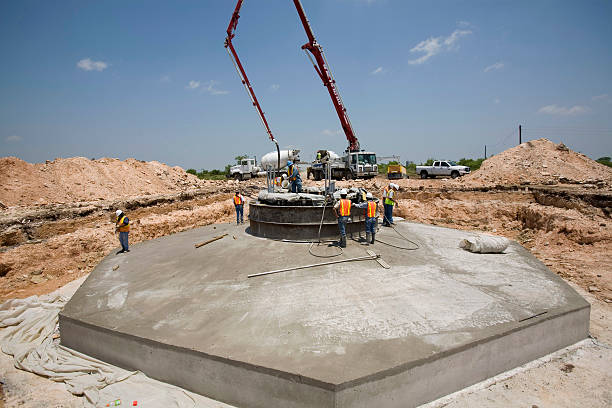Concrete Pedestal Details
- Concrete Cost Estimator
- Concrete Continuous Footing
- Landscape Bidding and Estimating
- Construction Cost Estimating
- Concrete and steel cost estimation
- Construction Cost Estimate Breakdown
- Construction Estimating Worksheet
- Home Construction Cost Estimate
- Estimate Pricing Sheet
- Sheet for General Contractor
- Construction Cost Estimate
- Labor Materials Cost Estimator
- Masonry Estimating Sheet
- Sheet for Building Contractor
- Construction Schedule Bar chart
- General Cost Estimator Sheet
- General Construction Estimate
- Building and Road Estimating Sheet
- Detailed expense estimates
- Door and Window Takeoff Sheet
- General Construction Cost Estimating Sheet

Introduction
A concrete pedestal is a widely used term in construction industry news. A classic pedestal is a square, circular, or octagonal compressive structure that is placed between the footing and the column so that the load is transferred uniformly into the footing.
In absence of a concrete pedestal, the load which is subjected to the column is not transferred uniformly to the footing, which leads to structural failure and damage in both the column and the footing.
Functions of the concrete pedestal
A concrete pedestal has several functions some of them are given below.
- A concrete pedestal helps in equal distribution of column’s load to the footing.
- In case the soil on which the construction is to be done is of inferior quality (near to the water table), then there are chances of corrosion of the column, to prevent this a concrete pedestal is used.
- When wood or metal is used as a column then the moisture forms the soil can damage and weaken the column, to prevent this a concrete pedestal is used.
- A long and thick column that is suspended on a thin footing may lead to structural failure, to avoid this the columns are cut shortand to compensate for that height a concrete pedestal base is used.
Concrete pedestal design detail
A concrete pedestal consists of three parts.
- Plinth - The lowest part or the base of the pedestal.
- Die - The middle part, rectangular block of the concrete pedestal.
- Cap - The topmost part of the pedestal.
All three parts of the concrete pedestal are constructed monolithically.
The dimensions of the concrete pedestal depend upon the pedestal reinforcement details, which ensure the safe and uniform transfer of column load to the footing. After this a reinforcement cage is fixed with pre-decided shutter material. The shuttering of footing, pedestal and column are fixed consecutively, leaving a gap for concrete filling.
Concreting
The concrete is made in a rotating drum mixer and then is poured inside the reinforcement cage. After that the concrete is vibrated so that there are no air voids left. After that it is left for 24-48 hours and then the shuttering is unfixed. The structure is further cured for 7 to 14 days.
Advantages and disadvantages of the concrete pedestal
Given below are some advantages and disadvantages of a concrete pedestal.
Advantages of the concrete pedestal
- Distributes weight on the column uniformly on the footing.
- Prevents structure failure.
- Allows construction where the soil bearing capacity is low.
- It strengthens the structure by preventing a direct application of load on the footing.
- Concrete being strong and durable is the best choice for a pedestal.
Disadvantages of the concrete pedestal
There is only one disadvantage of the concrete pedestal and that is it increases the cost of the project, because of additional use of concrete and other resources.
Conclusion
The advantages of a concrete pedestal exceed its disadvantages, making it the best choice for construction. It ensures the long life of the building and avoids structure failure, which was common when a concrete pedestal was not used.
- Application of concrete calculator
- Roofing Calculator can streamline the roof estimating process
- House construction cost calculator
- Engineering column design excel spreadsheet
- Material Estimating Sheet with Excel
- Materials List and Cost Estimate Worksheet
- Concrete Slab Estimating Calculator Sheet
- Common types of foundations for buildings
- Online calculation of construction materials
- Estimating with Excel for the Small Contractor
- Concrete Beam Design Spreadsheet
- Virtual Construction Management app for construction
- Autodesk’s Project Skyscraper
- Reed Construction’s Reed Insight
- Manage your construction project documentation
- Costimator, the popular cost estimating software
- On Center Software for construction professionals
- Free Construction Estimating Software
- Plumbing Calc Pro
- Cost Estimate Worksheet
- HVAC Piping Quantity Takeoff Worksheet
- Construction Estimating Software Sheet
- Estimate Cost Templates
- Construction Punch List
- Construction cost estimating template consisting estimating basic
- Gantt Chart Template for Excel
- Download Civil Engineering Spreadsheets with Verification
- The Building Advisor Estimating and Budgeting Worksheet
- Spreadsheet for design of concrete bridge
- Construction Estimating Software Free









